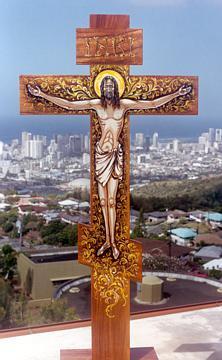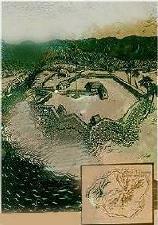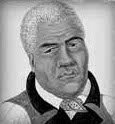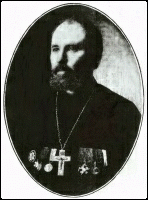Orthodoxy in Hawaii
Orthodox Christianity in Hawaii has a history beginning with the early Russian missions of the 19th century and continuing to the work of multiple Orthodox churches on the various islands that make up the Aloha State.
Contents
History of Hawaiian Orthodoxy
| This article forms part of the series Orthodoxy in America | |
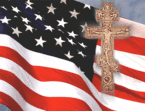
| |
| History | |
| American Orthodox Timeline American Orthodox Bibliography Byzantines on OCA autocephaly Ligonier Meeting ROCOR and OCA | |
| People | |
| Saints - Bishops - Writers | |
| Jurisdictions | |
| Antiochian - Bulgarian OCA - Romanian - Moscow ROCOR - Serbian Ecumenical Patriarchate: | |
| Monasteries | |
| Seminaries | |
| Christ the Saviour Holy Cross Holy Trinity St. Herman's |
St. Tikhon's St. Sava's St. Sophia's St. Vladimir's |
| Organizations | |
| Assembly of Bishops AOI - EOCS - IOCC - OCEC OCF - OCL - OCMC - OCPM - OCLife OISM - OTSA - SCOBA - SOCHA | |
| Groups | |
| Amer. Orthodox Catholic Church Brotherhood of St. Moses the Black Evangelical Orthodox Church Holy Order of MANS/CSB Society of Clerks Secular of St. Basil | |
| Edit this box | |
Christianity in Hawaii
The first liturgical Christian service held in Hawaii was a Russian Orthodox Paschal service. Sometime between 1750 - 1793*, while traveling from the Far East to what was then Russian America, a Russian trading ship stopped over in the Hawaiian Islands. The Russian Orthodox priest, not wanting to celebrate Pascha at sea, instructed the captain to disembark. The captain then told the priest that he feared the "natives" but was then told, "They will not harm us, for we are Orthodox, and we bear the Light of Christ to illumine their hearts." They disembarked and blessed a temporary altar under a newly built temple made out of palms and bamboo and adorned with a Znammeny icon of the Mother of God and the Christ Child. It was rumored that as they departed the priest left the icon used in the Paschal Liturgy. The ship's priest promised that, "We shall return and baptize these natives to the One, Holy, Catholic, and Apostolic Church."
The first Protestant service was a lay funeral service conducted by Capt. James Cook for an English sailor at Napo‘opo‘o (Kealakekua) on the Big Island of Hawaii in 1779.
*Exact dates differ from 1750, 1792, and 1793
First Orthodox Chapels
In 1815, Russians built Hawaii's first Orthodox church; the Russian Orthodox chapel at Fort Elizabeth. On the Island of Kaua'i, three Russian forts were built: Fort Alexander, Fort Barclay, and Fort Elizabeth. Fort Alexander also housed a small Orthodox chapel, but Fort Elizabeth was the trading base for the new Russian-American Company in Hawaii. When King Kaumuali'i of Kaua'i ceded his kingdom to King Kamehameha the Great in 1816 following the tsar's refusal to annex Kaua'i due to political troubles in Russia, the forts were also ceded, and the Hawaiian Islands become one unified kingdom. The chapels ultimately fell into disrepair after Calvinist missionaries from the United States landed in 1820 after the death of King Kamehameha I.
In 1882, the Hawaiian Kingdom sent a diplomatic delegation to St. Petersburg, Russia, to witness the coronation of Tsar Alexander III. The reports of the Hawaii's special envoy to the Russian court, Colonel Curtis I'aukea, Secretary of Foreign Affairs for the Kingdom of Hawaii, regarding the Russian Orthodox liturgical services were widely published in Hawaiian-language newspapers. Two years later, Tsar Alexander III sent King Kalakaua the Imperial Order of St. Alexander Nevsky, the highest Russian award, and established a permanent Russian embassy in Hawaii, along with a very small Orthodox chapel. Subsequently, 200 Ukrainians were imported by American sugar planters.
In 1893, Queen Lili'uokalani was deposed by U.S. Marines and American sugar plantation owners, who were mostly the children of American Calvinist missionaries, and a provisional government under the protection of the United States was installed. In 1898, Hawaii was incorporated into the United States despite near universal opposition from native Hawaiians. In the early 1900s, the Russian ambassador to Hawaii was recalled, the embassy was moved to a small office, and the Russian Orthodox chapel was forever closed.
St. Innocent of Moscow also made a brief stop-over in Hawaii during his travels from Asia to Western America.
Rebirth of Orthodoxy
On November 27, 1910 (O.S., the Feast Day of the Znamenny-Kursk Root Icon of the Sign of the Mother of God), reader services were organized and served by Vasily Pasderin.
In 1915, an official request by the Russian Orthodox community in Hawaii and the Episcopal Bishop of Hawaii, Henry B. Restarick to the Holy Synod in St. Petersburg; a priest was dispatched that same year to Hawaii (with the blessing of Archbishop Evdokim (Meschersky) of the Aleutians) to pastor the large population of Orthodox Russian faithful. He established permanent liturgical services in Hawaii and on Christmas December 25 (O.S.) / January 7 (N.S.) 1916, Protopresbyter Jacob Korchinsky celebrated the Divine Liturgy in the Holy Trinity Chapel of the Saint Andrew's Episcopal Cathedral in Honolulu. Thus Orthodoxy was re-established in Hawaii.
Fr. Jacob, a well-known missionary priest, established churches in Canada, the United States, Alaska, Australia and the Phillipines. He was arrested in Odessa on June 23, 1941 and shot (murdered) two months later.[1]. He has not yet been officially recognized as a martyred saint. St. Tikhon of Moscow once quoted Fr. Jacob's missionary exploits this way, "He did much to convert the heathens to the Christian Faith and returned many Uniates to the Orthodox Church. He set the foundation for parish life in many places, built churches and assisted the unfortunate with his acquired medical knowledge."
(Report by Bishop (Saint) Tikhon Belavin to the Holy Synod. No. 155 Nov. 26, 1906)
Following the departure of Fr. Jacob Korchinsky to Australia in March of 1916, he was subsequently replaced by Archpriest John Dorosh in that same year, who remained in Hawaii until his departure in the 1920s.
In subsequent years, the Russian Orthodox Church in Hawaii shipped or flew temporary priests to the Hawaiian Islands to care for the dwindling Orthodox population, becoming part of the Russian Orthodox Church Outside Russia (ROCOR). A permanent priest was not stationed in Hawaii until 1921, when Archimandrite Innokenty Dronov of Hilo, a contemporary of St. Jonah of Manchuria, St. John of Shanghai and San Francisco and Metropolitan Meletius of Harbin, was dispatched and served the entire Orthodox Christian flock on all the Hawaiian Islands. Fr. Innokentiy had a large following of Japanese Orthodox Christians. He frequently returned to the Diocese in San Francisco to report to Archbishops Apollinary (Koshevoy) and Tikhon (Troitsky) and for medical reasons. He is now purportedly buried on the Big Island of Hawaii. Until the assignment of Archpriest Anatole Lyovin, Fr. Innokenty was the longest serving priest in the history of the Orthodox Church in Hawaii.
Multiple jurisdictions
Up until the 1960s, the Russian Orthodox Church was the only Orthodox jurisdiction in the Hawaiian Islands. Following the 1960s, parishes from three separate Orthodox jurisdictions established themselves in the Islands: Greek, Serbian, and OCA. At one point there were as many as five different Orthodox jurisdictions in the Hawaiian Islands. Despite this multiplicity of jurisdictions, all Orthodox churches in Hawaii are in communion with one another and have friendly relations. (See also: Orthodoxy in America, Diaspora.)
The Russian Orthodox Church (ROCOR)
In the late 1960s, a group of Russian Orthodox Christians parted ways with the local Greek community and joined the Russian Orthodox Church in Hawaii under the Omophorion of Archbishop Anthony of Los Angeles; they formed the St. Mark of Ephesus Russian Orthodox Mission Parish. In the early 1980s, this mission parish was later re-consecrated under the heavenly protection of the Mother of God and is now known as the Holy Theotokos of Iveron Russian Orthodox Church. In the late 1990s, the Council President of the Russian Orthodox community in Hawaii, Anatole Lyovin, was ordained to serve the Orthodox faithful in Hawaii. After many years of prayer, hard work and dedication, this community recently purchased a new Church complex in Kailua, Oahu. This church is also where the Miracleworking "Hawaiian" Iveron Icon of the Theotokos is brought on most Saturdays and Sundays for veneration, when not travelling to other churches. This community is under the spiritual care of Archbishop +Kyrill (Dmitrieff) of San Francisco (ROCOR). Four clergy are assigned to this parish; Priest Nectarios Yangson, the Rector, Archpriest Anatole V. Lyovin, Pastor Emeritus, Archpriest Konstantin Sorrell, and Deacon Seraphim Stojance Andov.
In the mid to late 1990's, a separate Russian Orthodox mission community was established on the Big Island of Hawaii. It later became inactive.
In 2017, a new Orthodox monastic Hermitage was established on the Big Island of Hawaii in Kapaau. The priest-in-charge is Fr. Columba Stephen Lally, two nuns also live and worship at the hermitage.
In 2017, a new Orthodox Mission was also established on the Island of Kauai. Priest Nectarios Yangson (Rector of the Iveron Church in Honolulu) is the priest-in-charge and serves the ROCOR Kauai Mission on a regular basis.
The Greek Orthodox Church (GOARCH)
In the mid 1960s, a Greek Orthodox community established a Greek Orthodox mission under the auspices of the Greek Archdiocese. This community became known as Ss. Constantine Constantine and Helen Greek Orthodox Church. The current Dean of the Cathedral is Fr. Alexander Leong, who was assigned to the parish in Honolulu in 2013. The community is under the omophorion of Metr. Gerasimos (Michaleas) of San Francisco (GOARCH). This community is well-known for its annual Greek Festival held at Ala Moana Beach Park near Waikiki.
In the 1990s, a Greek Orthodox mission was established on the Island of Maui. It later became inactive, but there are efforts underway to revive it. The mission has been served by clergy from Ss. Constantine and Helen Greek Orthodox Cathedral in Honolulu.
The Serbian Orthodox Church
In the early 1990s, a Serbian community established an Orthodox mission dedicated to St. Lazar of Kosovo. The Serbian mission later became inactive, and its remaining members joined the local Russian and Greek churches. There has been a recent interest within the Serbian Orthodox community in Hawaii to re-establish this mission. In recent years, visiting clergy (including Bishop Maxim (Vasilijevic) of Western America) have come from the mainland to minister to them. This mission is now active and under the spiritual direction of Protopresbyter Blasko Paraklis.
The Antiochian Orthodox Church
In 2003, the short-lived St. Paul the Apostle Antiochian Orthodox Mission was established in Honolulu at Fort Shafter Army Base. The rector of this mission was Fr. Isaiah Gillette, a chaplain with the military. Following Fr. Isaiah's transfer to Texas, the mission was disbanded.
The Orthodox Church in America (OCA)
In early 2004, a new Orthodox community under the jurisdiction of the Orthodox Church in America (OCA) was established on the Big Island of Hawai`i, in Kailua-Kona. In 2007 this was named St. Juvenaly Orthodox Mission.
In 2013, this community purchased a building in Honomu, on the east side of Hawaiʻi. The east-side mission is now known as Holy Ascension Orthodox Church.
The administrator of these mission parishes is Fr. Matthew Tate, and they are under the Omophorion of His Eminence, Archbishop Benjamin (Peterson) of San Francisco of the Diocese of the West. Archpriest George Gray, is attached to the St Juvenaly Church, and Priest Benjamin Huggins is Rector of the Holy Ascension Mission.
A Miracle in the Islands
During the month of October in the year 2007, a great miracle occurred in the State of Hawaii when the Miracleworking and Myrrh-streaming "Hawaiian" Iveron Icon of the Theotokos began streaming myrrh in the home of an Orthodox Christian couple in Honolulu.
The Iveron Icon, a small mounted print, (a copy of the Montreal Iveron Icon), originally purchased at the Holy Trinity Russian Orthodox Cathedral's small church kiosk in Toronto by Archpriest Anatole V. Lyovin, was given to the Reader Nectarios in Hawaii as a gift for the aforementioned name's day. This Icon was in the Reader's possession for eight years before it, along with a small hand-painted cross, began exuding a fragrant oil-like substance traditionally referred to as "myrrh" by the Orthodox Church. It was decided by Archbishop Kyrill of San Francisco that this Icon of the Mother of God was to be taken to the Holy Virgin Russian Orthodox Cathedral in San Francisco where it underwent investigation and testing and was carefully examined by the Archbishop and a commission of priests to verify the Icon's miraculous attributes.
In June of 2008, the "Hawaiian" Iveron Icon of the Mother of God was declared by the Russian Orthodox Church to be a genuine and miraculous Icon, which was in fact exuding myrrh on a continuing basis. It was decided by Episcopal proclamation (Ukaz) that the Reader Nectarios, the Icon's original owner, be "Her" guardian and was to escort the Icon to the various churches and monasteries of Holy Orthodoxy, in effect, to provide for the veneration of all Orthodox Christian faithful.
Since that time, the Miracle-working Icon has visited over 1000 churches and monasteries throughout North America, Europe, and Asia, and has been venerated by millions of faithful. The holy Icon has been a constant source of a growing number of miraculous occurrences, including the healing of cancer, blindness, demonic possession, and various types of physical and spiritual infirmities. People have felt a deep spiritual connection to this Icon, even spending hours on end simply standing before "Her", and watching the myrrh flow from the hands and stars on the image.
As She travels, the Holy Icon has been lovingly called in Greek, "The Wandering Panaghia" since She does not have a memorial church shrine to call Her own. When resources become available, plans are underway to build a proper chapel and retreat center in Hawaii to house the Mother of God's Wonderworking Iveron Icon. It has also been affectionately referred to as the "Protectress of Hawaii" by some of the Orthodox Christian faithful in Hawaii, since Orthodox Christians from all the Hawaii parishes have come to love and have grown very close to this miracle from God.
May She forever protect the Christian faithful of Hawaii!
Parishes in Hawaii
- Holy Theotokos of Iveron Russian Orthodox Church (Honolulu) - Official website
- Ss. Constantine and Helen Greek Orthodox Cathedral (Honolulu) - Official Website
- St. Juvenaly Orthodox Mission (Kona) - OCA listing, Mission website
- Holy Ascension Orthodox Church (Honomou) - Official Website
- St. Lazar Serbian Orthodox Mission Parish (Oahu) - Contact Information (No resident clergy or regular services)
- Maui Greek Orthodox Mission - Official Website (currently regrouping under the leadership of Ss. Constantine & Helen)
- Our Lady of the Angels Western-Rite Community at Na Pua Li'i Hermitage (ROCOR) - Official website
- The Orthodox Christian Mission of Kauai - Mission Website (served by clergy from the Holy Theotokos of Iveron Orthodox Church)
Orthodox Clergy Assigned in Hawaii
- Priest Alexander Leong, Dean of Ss. Constantine and Helen Greek Orthodox Cathedral, Honolulu, HI.
- Priest Nectarios Yangson, Rector of the Holy Theotokos of Iveron Russian Orthodox Church, Honolulu, HI.
- Priest Columba Stephen Lally, Rector of Our Lady of the Angels Western-Rite Community, Kapaau, HI.
- Priest Benjamin Huggins, Rector of the Holy Ascension Orthodox Mission, Honomou, HI.
- Archpriest George Gray, St. Juvenaly Orthodox Mission, Honalo, HI.
- Archpriest Anatole V. Lyovin, Holy Theotokos of Iveron Russian Orthodox Church, Honolulu, HI.
- Archpriest Octavian Mahler, Holy Theotokos of Iveron Russian Orthodox Church, Honolulu, HI.
- Archpriest Konstantin Sorrell, Holy Theotokos of Iveron Russian Orthodox Church, Honolulu, HI.
- Priest George Hill, Chaplain, US Army Garrison, Schofield Barracks, HI
- Deacon Seraphim Stojance Andov, Holy Theotokos of Iveron Russian Orthodox Church, Honolulu, HI.
- Deacon Gabriel Yepez, Maui Greek Orthodox Mission, Makena, HI
References
External links
- Orthodox Christianity in the Hawaiian Islands
- The Orthodox Hawaiian Iveron Icon Association "OHIIA"
- A Yahoogroup dedicated to Orthodox Christianity in Hawaii
- TWO HUNDRED YEARS ON THE ROAD: A History of the Orthodox Church in Hawaii by Amir A. Khisamutdinov and Rev. Anatole V. Lyovin. The book chronicles the history of the Orthodox Christian Church in the Hawaiian Islands from the 1700s to the present day. Containing rare photos and historical articles not seen before.
- Wikipedia:Russian Fort Elizabeth
- Fort Elizabeth / Pāʻulaʻula
- "From Island to Island with the Word of God on His Lips - How the Only Orthodox Priest on the Islands Lives and Works" An article about Fr. Innokentiy Dronoff of Hilo from 1937, translated by Rev. Anatole V. Lyovin.
- Fr. Jacob Korchinsky: Missionary and Martyr A historical account of slain Protopresbyter Jacob Korchinsky.
- "A Spiritual Connection" Greek Orthodox Church in Hawaii honors Chinese Martyrs (Aug 25, 2001)
- Honolulu Star Bulletin article on Fr. Anatole Lyovin of the Russian Orthodox Church (June 2, 2007)
- News from the Serbian Orthodox community in Hawaii[1] (Nov 10-11, 2007)
Sources
- Archimandrite Avgustin (Nikitin); "Gavraiskie ostrova i Rossiia (Obzor tserkovnykh sviazei i kontaktov" - (Saint-Petersburg; Minneapolis 2002)
- V. Rev. Fr Michael Protopopov; A History of the Russian Orthodox Presence in Australia - Submitted Thesis
- Pacific Commercial Advertiser, January 23, 1916
- TWO HUNDRED YEARS ON THE ROAD: A History of the Orthodox Church in Hawaii by Amir A. Khisamutdinov and Rev. Anatole V. Lyovin. (Honolulu, HI., 2011)
